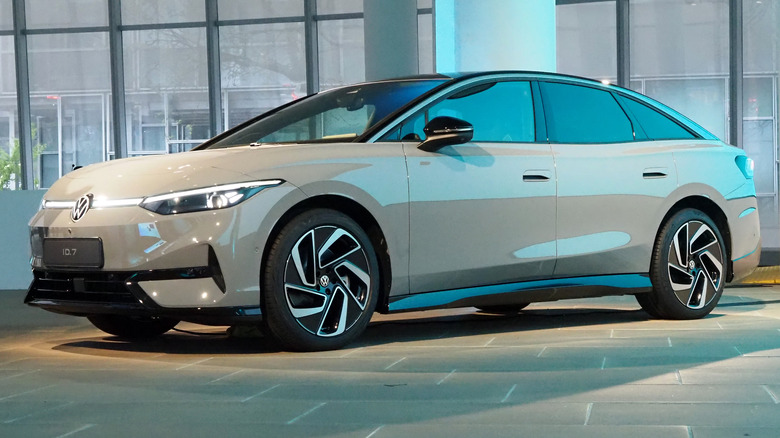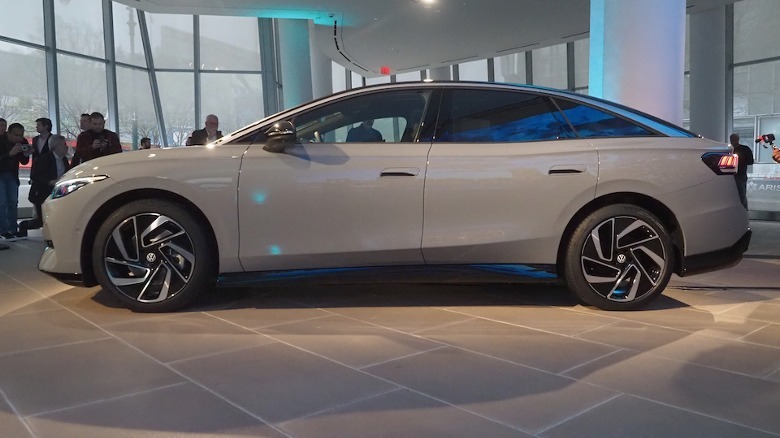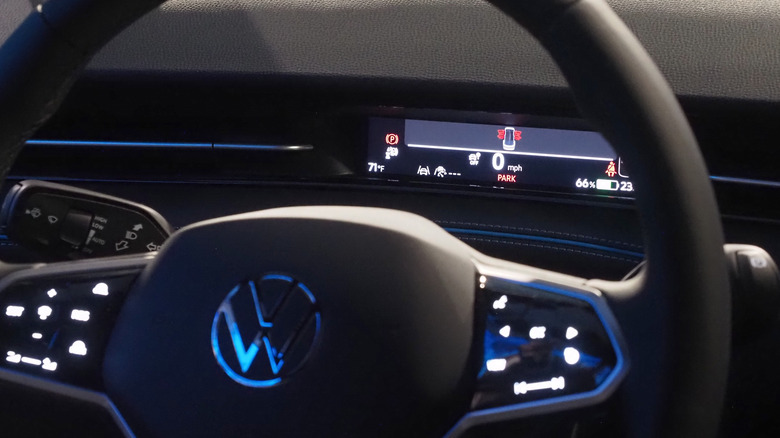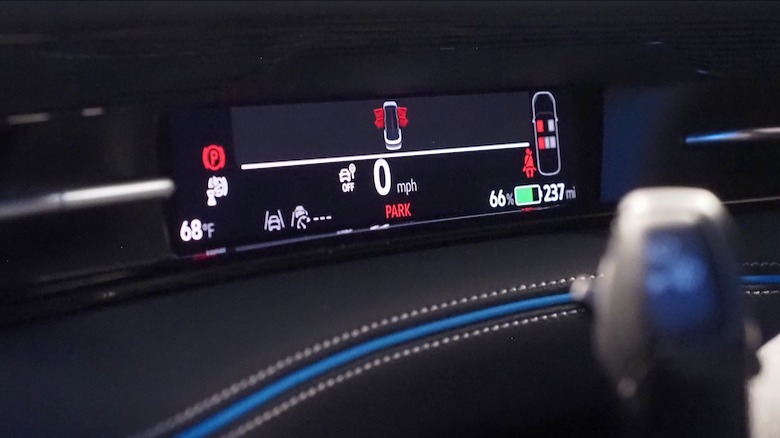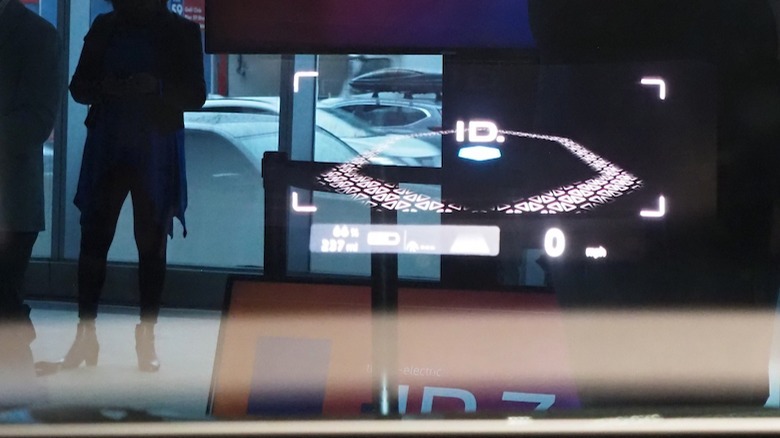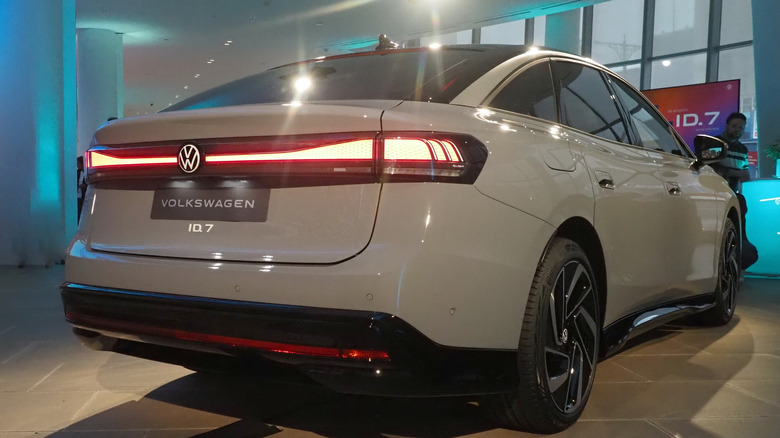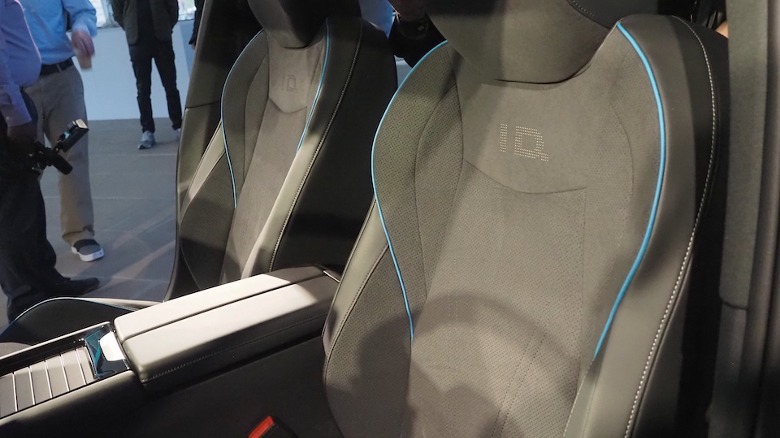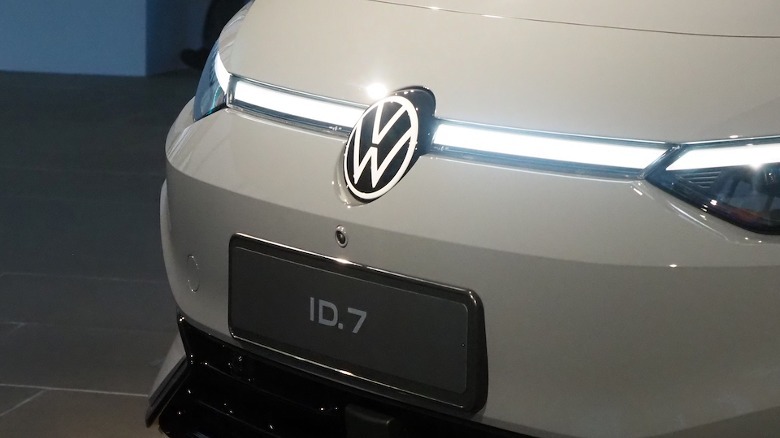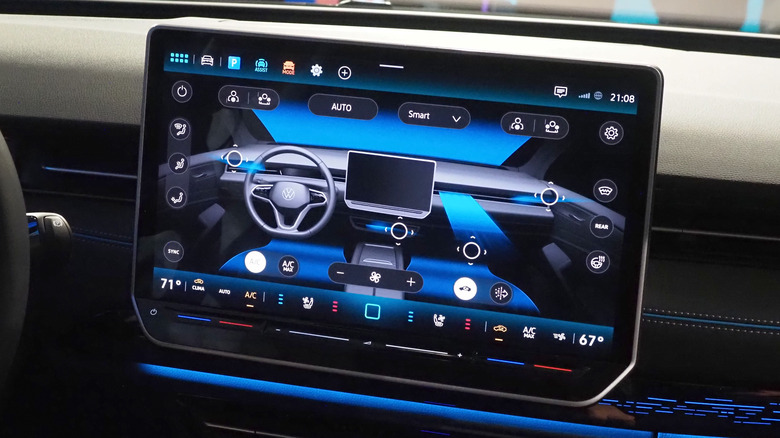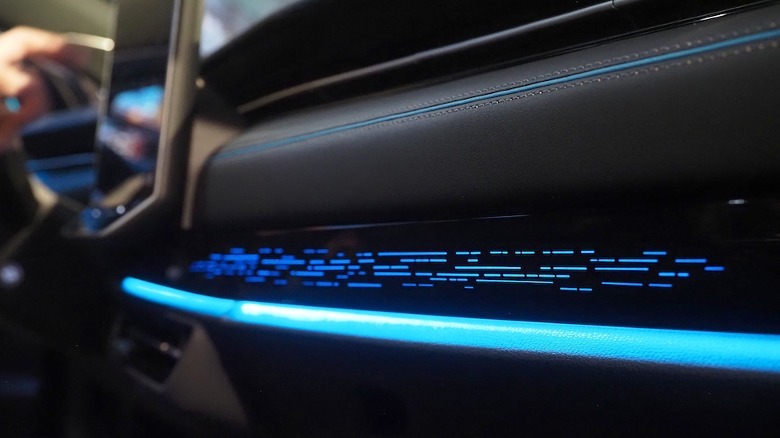2025 Volkswagen ID.7 First Look: Sleek Style And Odd Decisions
The 2025 Volkswagen ID.7 has an uphill battle ahead of it. The brand-new, all-electric sedan may have made its official debut today, but by the time it goes on sale it'll face rivals including Tesla's well-established Model 3, to newer fare like the Hyundai Ioniq 6. Add in the fact that the ID.7 is a sedan, at a time when the sales share of crossovers and SUVs continues to rise, and the scale of the electric car's challenge starts to become clear.
In the U.S., at least, it'll share electric flagship status with the ID. Buzz, Volkswagen's upcoming EV microbus. Both are expected to arrive in North America in 2024, lagging behind European counterparts.
By then, it's entirely likely that the fast-moving EV segment will have evolved again. Volkswagen is attempting to put its best foot forward with the 2025 ID.7, packing the sedan with hardware and gadgets so-far unseen on its other MEB-based electric models. Here's what stands out from VW's fanciest electric car.
A smarter head-up display
Head-up displays (HUD) — projecting key driving metrics from the gauge cluster onto the windshield ahead of the driver — certainly aren't new, and though the technology is newer, neither is augmented reality in cars. Volkswagen, though, is bringing what has until now been the preserve of luxury models to a more mainstream EV. The ID.7's AR HUD won't be a rare, expensive option, either.
Instead, Volkswagen is making it standard across the board on the ID.7. As a result, the regular digital display for the driver is much smaller — integrated into the horizontal band spanning the dashboard — showing only key metrics like speed and battery status. Everything else gets projected up over the top of the road ahead. It's tricky to photograph, but looks much crisper in person.
Unlike most HUDs, the ID.7's has multiple layers of "depth" at which the information is projected. Core information like the speed limit of the road appears around 11 feet ahead of the car, however, things like upcoming turns appear around 33 feet away. Volkswagen then aligns them with the road itself, and synchronizes the AR HUD's data with the multicolor ID. light bar across the dashboard.
Not the battery pack you'd expect
Volkswagen is promising to keep things straightforward with the ID.7: There'll be a handful of configurations to choose between, making both production and shopping easier. For Europe, there'll be a choice of two batteries. In North America, only the smaller of the two batteries will be offered; an 82 kWh pack with 77 kWh usable capacity.
Despite that, VW is predicting more than 300 miles on a full charge, based on the U.S. EPA's tests. That's for the rear-wheel drive ID.7; an all-wheel drive version will follow, though the automaker hasn't made any range estimates. However, it should be reasonably speedy: VW is targeting a low-5-second 0-60 mph time for the ID.7 AWD.
Even if the U.S.-spec ID.7 manages to nudge past 300 miles of range upon final testing, it's still an outlier in prioritizing the smaller battery for the North American market. More typically, EVs launch in the U.S. and Canada with the biggest battery pack, on the assumption that American drivers still routinely over-estimate just how much range they'll require.
Volkswagen's argument is that the cost of batteries means that for the ID.7 to still be a "people's car," it needs to strike a balance between range and sticker price — whatever those numbers end up being. Sadly, it also means that the ID.7 will be limited to 170 kW DC fast charging, as the speedier 200 kW charging rate is exclusive to the larger battery pack.
Revamped infotainment to silence the critics
While most of the information relevant to the driver is up in the HUD, that doesn't mean the ID.7 goes without a sizable central touchscreen. It's a 15-inch panel which, while it may bear a passing resemblance to the UI already seen on the ID.4, Volkswagen says it has been entirely revamped based on feedback for the existing ID. infotainment system.
There's still a combination of touch-sensitive and touchscreen controls — including VW's love-'em-or-hate-'em sliders for volume and cabin temperature (though at least they're backlit now) — but the interface has been split out into new widgets, along with a persistent Car Control Center option floating the most commonly-used options above everything else. It looks a little cleaner, though we'll have to test it on the road to see how well it holds up in practice.
Likely proving equally divisive is the climate control system. Rather than physically adjustable vents, VW follows in the footsteps of Tesla, Rivian, and others with electronically-controlled airflow: drag your finger around the touchscreen to direct the path of the air from the hidden grilles.
The automakers argument is that it makes for a smarter system that can pre-condition the cabin as you approach the ID.7 with the key in your pocket, and even respond to voice commands. Say "Hello Volkswagen, my hands are cold" and the EV will automatically turn on the heated steering wheel and redirect the nearest vents to blow warm air on your fingers.
